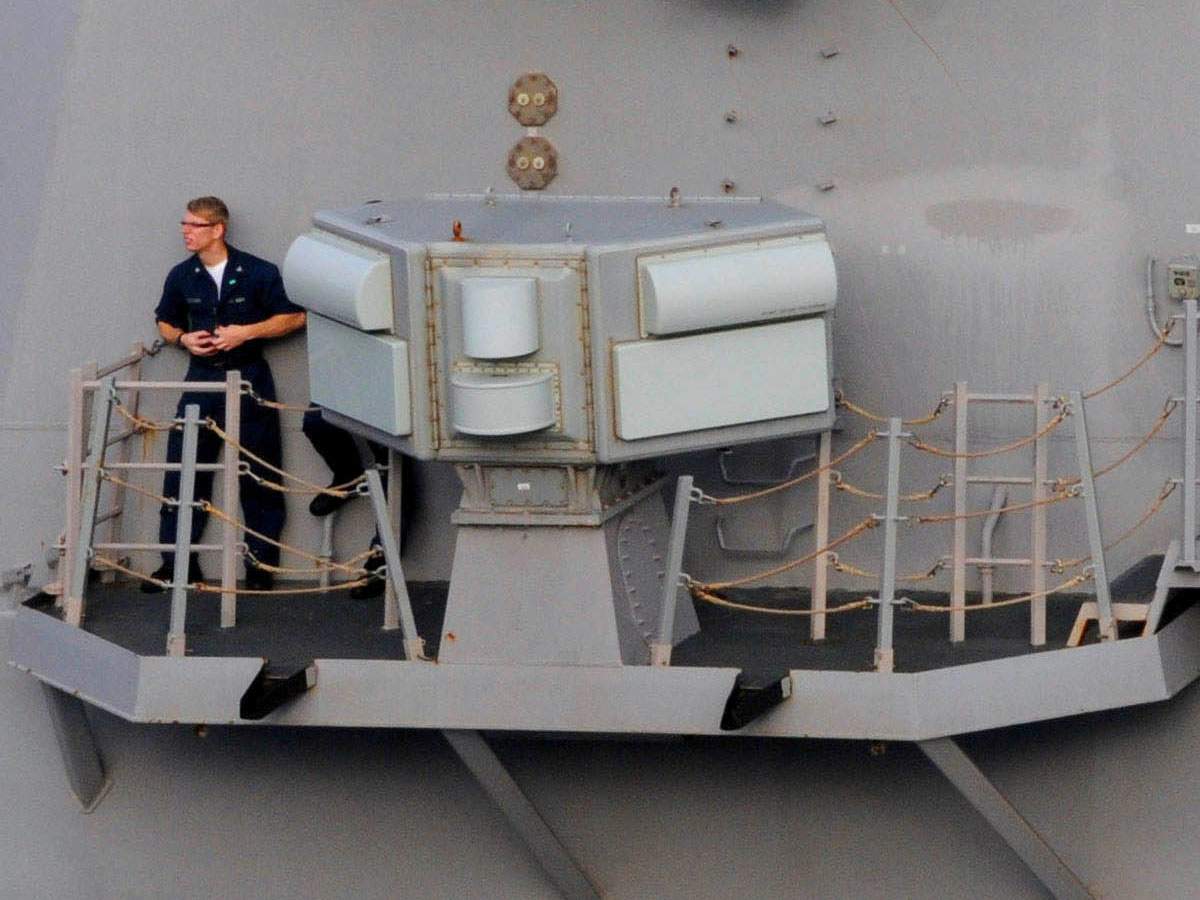
General Dynamics Mission Systems was awarded a full-rate production contract for the Navy’s Surface Electronic Warfare Improvement Program (SEWIP) Block 1B3, which will add display upgrades, a high-gain high-sensitivity electronic capability and more to most of the fleet’s surface ships.
GDMS previously won a contract for design and low-rate initial production, and this five-year FRP contract was awarded after the Navy held a full and open competition for a lowest price technically acceptable award, GDMS Vice President and General Manager Carlo Zaffanella told USNI News.
“this is all about enhancing the EW capabilities … for anti-ship missile defense, counter-targeting and surveillance. It’s part of a systemic upgrade process the Navy has been going through, and it provides some really needed, really important capability,” he said.
General Dynamics has worked on SEWIP Block 1 since 2003. Block 1A improved and modernized the displays and user interface and enhanced hardware and signal processing capabilities, Zaffanella said. Block 1B1 replaced obsolescent parts, 1B2 improved electronic signals intelligence, and 1B3 will add additional display upgrades, add the high-gain high-sensitivity subsystem and increase situational awareness.
The Block 1 SEWIP improvements General Dynamics has worked on for more than a decade are complemented by Block 2 – electronic support improvements through a new antenna and receiver, with Lockheed Martin as the prime contractor – and Block 3 – with electronic attack capabilities built by prime contractor Northrop Grumman. A future Block 4 will provide advanced electro-optic and infrared capabilities.
GDMS, which was created when GD Advanced Information Systems and GD C4 Systems merged in January 2015, has taken “fairly substantial steps to share experts, to share investments, combine capabilities across what is now a much larger company” to prepare for Block 4 and other electronic warfare opportunities for all the military services, Zaffanella said.
“If you look at the tech they’re putting into modern radars and EW systems, these things have very much converged. And RF (radio frequency) convergence, which is a term you’re hearing more and more, relates to that thought,” he said.
“We can reapply electronics intelligently across various parts of the RF spectrum, and that of course opens up a lot of avenues for reuse and lower cost production in the future.”
Zaffanella said the Navy is working to create a future operating environment where many different kinds of sensors that are geographically dispersed can all be netted together to share information with sailors. General Dynamics’ approach to electronic warfare improvements, for which the company is increasing its internal research and development funding, may help support that concept.
“RF convergence is a really interesting thought. Are we capable of doing things across the RF spectrum that we used to do separately and differently in different parts of the spectrum? We behave a certain way for our radio, a different way for radar, a different way for EW, and we’re finding a much better ability to do things the same way,” he said.
“We’re finding much better uses of data sharing, especially big data kind of work, where we can combine information better than we used to be able to. All those things are very helpful for electronic warfare.”





